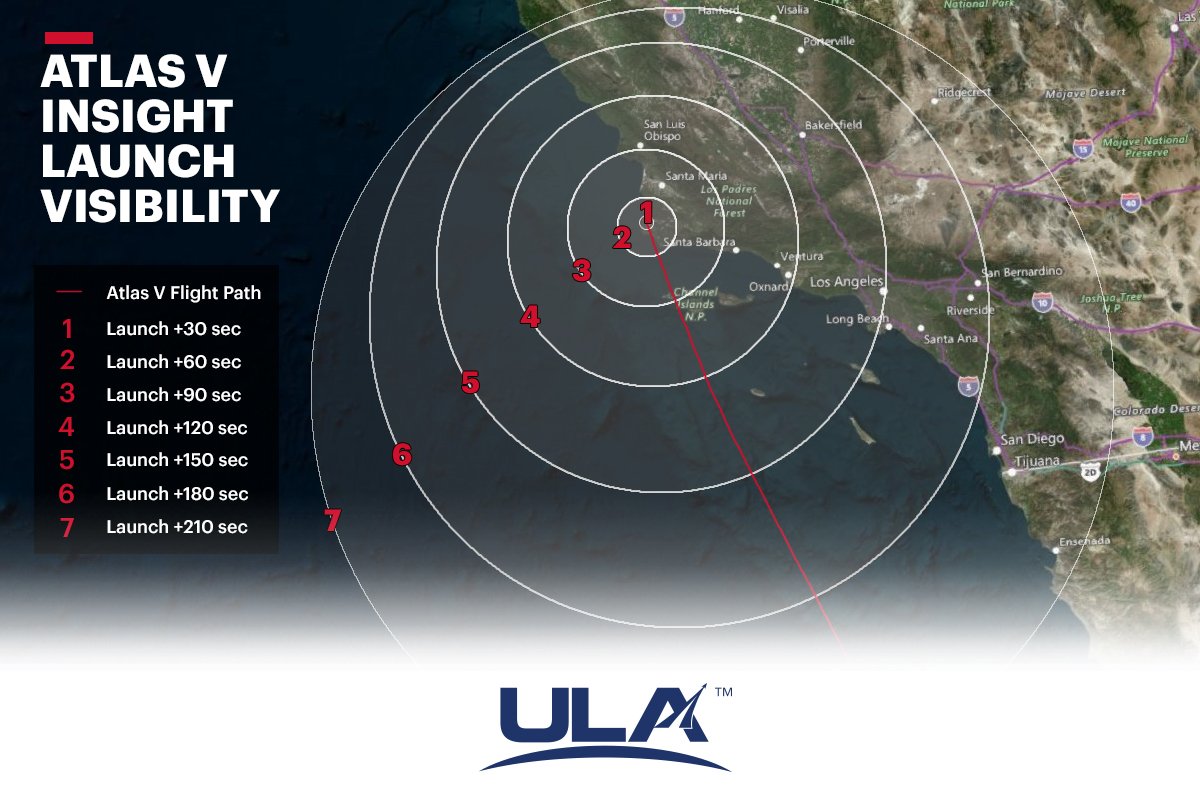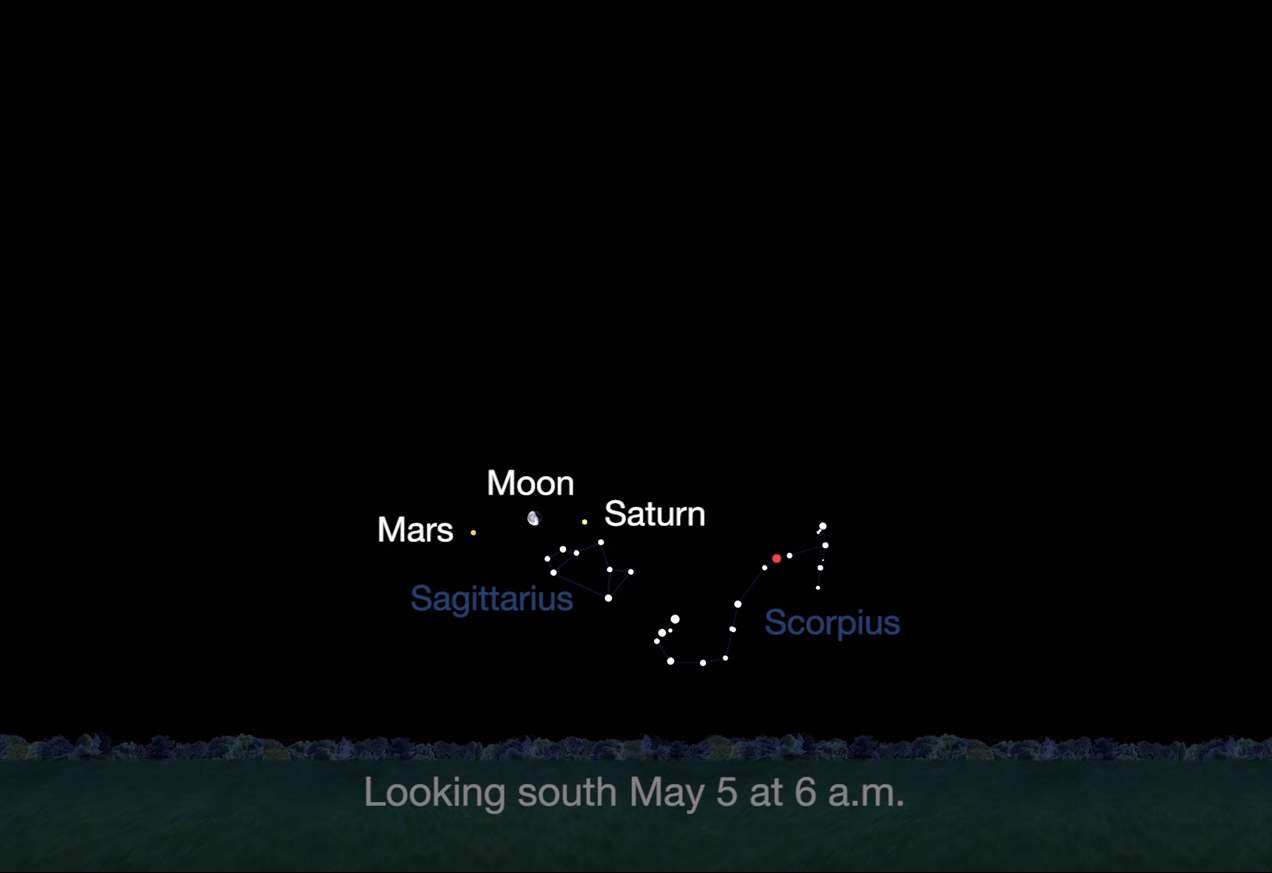Watching NASA's InSight Mars Lander Launch Saturday? Here's What to Expect

Update for May 5: NASA's InSight Mars lander has successfully launched into space. Read our wrap up here: NASA's InSight Launches to Probe Red Planet's Deep Interior
Residents across Southern California can witness the launch of new lander bound for Mars before dawn on Saturday. NASA is hoping for good weather to launch the mission, called InSight, on its nearly seven-month journey to the Red Planet.
The InSight Mars lander will launch Saturday at 7:05 a.m. EDT (4:05 a.m. PDT/1105 GMT) on Saturday from California's Vandenberg Air Force Base. This will be the very first time that an interplanetary mission will launch from Vandenberg, which is located 9.2 miles (14.8 kilometers) northwest of Lompoc, California. [Where to Watch NASA's InSight Mars Lander Launch from California]
Even if you don't live in Southern California, you can still watch InSight's launch live; just tune in on Space.com here, beginning at 6:30 a.m. EDT (1030 GMT), courtesy of NASA TV. But if you will be in the visibility area, read on to see what to expect early Saturday.
A bright arc before dawn
A United Launch Alliance Atlas V rocket will loft InSight toward Mars. Because the Atlas V will launch on a southward path after liftoff, spectators in Southern California, from Santa Barbara through Los Angeles and San Diego, should get a good view of the rocket rising into space.
Breaking space news, the latest updates on rocket launches, skywatching events and more!
Early risers should concentrate their view toward the north-northwest as the rocket traces a bright arc across the western sky.
The weather forecast is currently favorable for the launch, indicating generally clear skies, a light north-northwest wind and air temperatures hovering within a few degrees of 50 Fahrenheit (10 degrees Celsius). NASA officials have warned thatearly morning fog could obscure visibility for spectators close to the launch site.
The fog should top out at 600 feet (180 meters), so if you plan to watch InSight's launch in person, a viewing spot above that 600-foot mark, like a hill or ridge, may be a good bet.
Mars is looking good, too!
And, incidentally, Mars itself is becoming an increasingly prominent object in our night sky as it gets set to make an exceptionally close approach to Earth by midsummer. [How to See Mars During the InSight Lander Launch]
Currently, the Red Planet rises around 1:30 a.m. local time. A few hours later, before the break of dawn, it can be readily found in the south-southeast sky, glowing with a brilliant and steady orange-yellow light.
Mars is currently shining at a magnitude -0.5 on the brightness scale used by astronomers (negative numbers indicate brighter objects). Among the stars, only Sirius and Canopus are brighter.
But as Mars continues toward opposition — its closest point to Earth this year — it will only get more dazzling. Currently, Mars is 76 million miles (123 million km) from Earth.
But on July 30, the Red Planet will be the closest it has come to Earth — 35.8 million miles (57.6 million km) — since 2003. By July 30, Mars will visible from dusk to dawn and shine nine times brighter than it does now!
Finally, if you're up before sunrise on Sunday morning, the moon will make for a striking sight, with Mars around 2 degrees to the lower right of Earth's satellite.
Looking for clues
The 1,380-lb. (625 kilograms) InSight Mars lander is, in essence, a laboratory focused on investigating the interior and subsurface of Mars. The name "InSight" is not quite an acronym, but more of a compression of the mission's full title: Interior Exploration Using Seismic Investigations, Geodesy and Heat Transport.
InSight mission scientists hope to answer several questions, such as just how thick the Martian crust is and how much heat is released from just beneath the surface. Scientists also hope to get a good idea as to just how large Mars's core might be and check on any seismic activity, or "marsquakes," that might periodically occur.
InSight is the first Mars mission built to study the Red Planet's structure. In addition, two smaller cubesat satellites, each about the size of an attaché case, will travel on the same mission and will relay transmissions from the Martian surface back to Earth.
Launch window
If other issues postpone the launch, NASA has additional opportunities over the next five weeks to get InSight off the ground before the end of the current orbital alignment between Mars and Earth, which is favorable for such missions. Even with delays, however, InSight's arrival date at Mars will remain the same: the Monday after Thanksgiving, Nov. 26.
Built by United Launch Alliance, InSight's Atlas V rocket has an excellent record over these past 16 years, having launched a number of commercial, scientific and military payloads. Versions of an Atlas V launched the Mars Reconnaissance Orbiter in August 2005 and the New Horizons probe to Pluto and the Kuiper Belt in January 2006.
Visit Space.com Saturday for complete coverage of the InSight Mars lander launch.
Joe Rao serves as an instructor and guest lecturer at New York's Hayden Planetarium. He writes about astronomy for Natural History magazine, the Farmer's Almanac and other publications, and he is also an on-camera meteorologist for Verizon Fios1 News, based in Rye Brook, N.Y. Follow us @Spacedotcom, Facebook or Google+. Originally published on Space.com.

Joe Rao is Space.com's skywatching columnist, as well as a veteran meteorologist and eclipse chaser who also serves as an instructor and guest lecturer at New York's Hayden Planetarium. He writes about astronomy for Natural History magazine, Sky & Telescope and other publications. Joe is an 8-time Emmy-nominated meteorologist who served the Putnam Valley region of New York for over 21 years. You can find him on Twitter and YouTube tracking lunar and solar eclipses, meteor showers and more. To find out Joe's latest project, visit him on Twitter.


